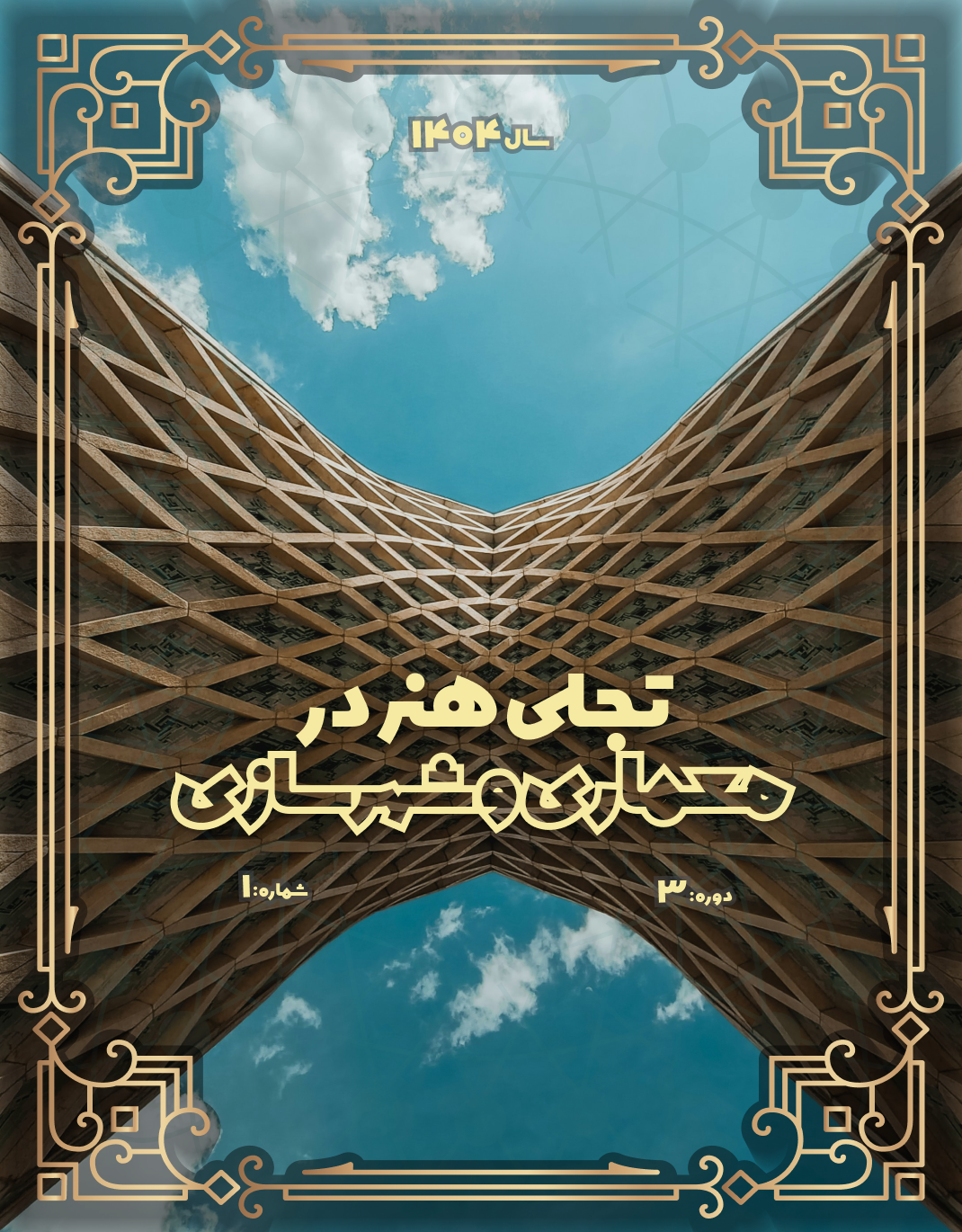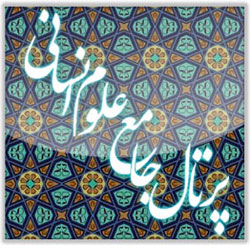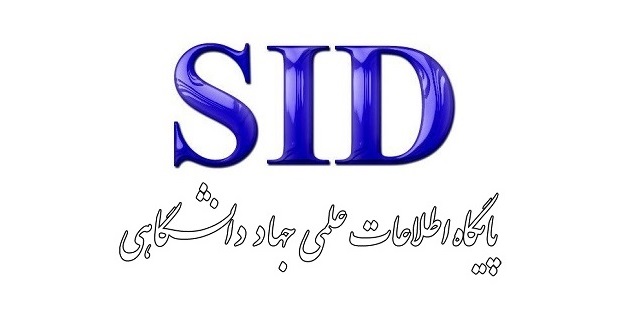نقش میزانسن و نورپردازی در ایجاد فضای معمایی و رمزآلود در سینمای جنایی دیوید فینچر (فیلمهای هفت، کلاب مشت زنی و زودیاک)
کلمات کلیدی:
فضای معمایی, سینمای جنایی, میزانسن, نور پردازی, دیوید فینچرچکیده
مسئلهی اصلی این پژوهش، بررسی نقش معماری، نورپردازی و میزانسن در ایجاد تعلیق و بیثباتی روانی در مخاطبان سینمای جنایی دیوید فینچر و مطالعه تخصصی روی سه فیلمSeven(1995)، Fight Club (1999) و Zodiac (2007) است. جامعه آماری شامل ۲۷۸ نفر از مخاطبان تخصصی در حوزههای سینما، معماری و روانشناسی بوده که از طریق پرسشنامههای استاندارد سنجش اضطراب محیطی، و همچنین ۱۲ مصاحبهی نیمهساختاریافته انتخاب شدهاند. نمونهگیری بهصورت هدفمند و از میان دانشآموختگان و متخصصان مرتبط انجام شده است. پژوهش با روش ترکیبی (کیفی–کمی) انجام شده و از ابزارهایی چون تحلیل نشانهشناختی ساختارگرا، روانشناسی گشتالت، نظریهی فضای ناخوشایند فروید، و نظریهی تولید فضا از هانری لوفور بهره برده است. تحلیل دادههای پرسشنامهای با استفاده از آزمونهای آماری توصیفی و کیفی انجام شده و مصاحبهها نیز با روش تحلیل محتوای مضمونمحور بررسی شدهاند. نتایج نشان میدهند که استفاده از نورپردازی کمکنتراست، قاببندی بسته، فضاهای معماری تنگ و تکرارشونده، رنگهای سرد و طراحی صحنهی صنعتی، بهطور معناداری باعث افزایش احساس اضطراب، تعلیق و درگیری ذهنی در مخاطبان شدهاند (0.01 > p). این یافتهها تأیید میکنند که معماری و میزانسن در آثار فینچر صرفاً نقش پسزمینه ندارند، بلکه در روایت و تجربهی روانی مخاطب، نقش فعالی ایفا میکنند. همچنین، یافتههای حاصل از دادههای میدانی نشان میدهد که مخاطبان این فضاها را حتی در خارج از زمینهی سینمایی، با احساس ناامنی، تهدید و جرمخیزی مرتبط دانستهاند. این بازخوردها نشان میدهند که بازنمایی سینمایی فضاهای معمایی میتواند در طراحی شهری و معماری نیز مورد توجه قرار گیرد و بهعنوان ابزاری هشداردهنده برای پرهیز از بازتولید محیطهای ناامن در شهرهای معاصر عمل کند. این نتایج قابلیت بهکارگیری در طراحی صحنه، نقد فیلم، روانشناسی محیطی و همچنین طراحی شهری و معماری ایمن را دارند.
دانلودها
مراجع
1. Schmid C. Henri Lefebvre and the Theory of the Production of Space. USA: Verso; 2022.
2. Bordwell D, Thompson K. Film Art 12th Edition. New York: Mc-Graw Hill; 2020.
3. Ataria Y. The Uncanny: New Directions. Phenomenological Psychology. 2024:205-21.
4. Küller R, Ballal SG, Laike T, Mikellides B. The impact of light and colour on psychological mood: A cross-cultural study of indoor work environments. Ergonomics (Taylor & Francis). 2006:1496-507.
5. Kutucu S. TRANSFORMATION OF MEANING OF ARCHITECTURAL SPACE IN CINEMA: THE CASES OF "GATTACA" AND "TRUMAN SHOW". Izmir: Izmir Institute of Technology; 2005.
6. Arnett R. The American City as Non-Place: Architecture and Narrative in the Crime Films of Michael Mann. Quarterly Review of Film and Video. 2009:44-53.
7. Browning M. David Fincher: Films That Scar. California: Praeger; 2010.
8. Raj SJ, Suresh AK. To Reign in Hell David Fincher's Enclosed Worlds of Transgression. A critical companion to David Fincher. Lanham, Mayland USA: Lexington Books; 2024. p. 109-25.
9. Huskinson L. The Psychologist: The British Psychological Society. the psychologist. 2021:38-42.
10. Shukla M. Analysis of David Fincher as an Auteur. International Journal of Advance Research, Ideas and Innovations in Technology. 2019:1073-8.
11. Youssef M, Missi SE. ARCHITECTURE AGAINST CRIME. BAU JOURNAL: HEALTH AND WELLBEING. 2018:1-12.
12. Garrett K. The Auteur Perspective of David Fincher. Oregon: Oregon State University; 2018.
13. Dogru MS. LIGHT AS AN INSTRUMENT OF VISUAL METAPHOR AND EXPRESSION IN CINEMA PRODUCTIONS: THE EXAMPLE OF FILM NOIR. spain: ResearchGate; 2017. p. 630-41.
14. Schreiber M. Tiny Life: Technology and Masculinity in the Films of David Fincher. Journal of Film and Video. 2016:3-18.
15. Brown W, Fleming DH. Deterritorialisation and Schizoanalysis in David Fincher's "Fight Club". Deleuze and Guattari. 2011;5(2, Special Issue on Schizoanalysis and Visual Culture):275-99.
16. Stanek Ł. Methodologies and Situations of Urban Research:Re-reading Henri Lefebvre's 'The Production of Space'. Zeithistorische Forschungen/Studies in Contemporary History. 2007:461-5.
17. Kammerer D. Video Surveillance in Hollywood Movies. Surveillance & Society. 2004:464-73.
18. Cozens P, Saville GJ, Hillier D. Crime Prevention through Environmental Design (CPTED): A Review and Modern Bibliography. Emerald Group Publishing Limited. 2005:328-56.
19. Braun V, Clarke V. Using thematic analysis in psychology. Qualitative Research in Psychology. 2008:77-101.
20. Guest G, Bunce A, Johnson L. How Many Interviews Are Enough?: An Experiment with Data Saturation and Variability. Sage Journals Home. 2006:59-82.
21. Gerrig RJ. Experiencing Narrative Worlds: On the Psychological Activities of Reading. USA: Yale University Press; 1993.
22. Pallasmaa J. The Eyes of the Skin: Architecture and the Senses. New York: John Wiley & Sons; 2012.
23. Cozens P, Hillier D. Revisiting Jane Jacobs's 'Eyes on the Street' for the Twenty-First Century: Evidence from Environmental Criminology. The Urban Wisdom of Jane Jacobs. London: Routledge; 2012. p. 19.
24. Weisburd D, Uding CV, Hinkle JC, Kuen K. Broken Windows and Community Social Control: Evidence from a Study of Street Segments. Journal of Research in Crime and Delinquency. 2023:727-71.
25. Shiel M, Tony F. Cinema and the City: Film and Urban Societies in a Global Context: Blackwell Publishers Ltd; 2001. 1-18 p.
26. Suresh AK, Raj SJ. Transgressions of the less dead Necropolitics of the subaltern in South Indian cinema: Voicing the Less Dead. Reshaping True Crime Stories from the Global Margins. United States: Lexington Books; 2025. p. 127-40.
دانلود
چاپ شده
ارسال
بازنگری
پذیرش
شماره
نوع مقاله
مجوز
حق نشر 2025 Mahdi Doosti (Author); Mohammad Behzadpour; Saeed Azemati, Hossein Aali (Author)

این پروژه تحت مجوز بین المللی Creative Commons Attribution-NonCommercial 4.0 می باشد.










